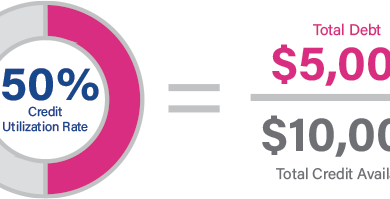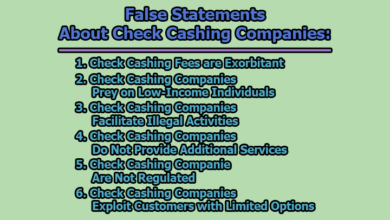What Document Explains Your Rights And Responsibilities As A Federal Student Loan Borrower? A Comprehensive Guide
The document that explains your rights and responsibilities as a federal student loan borrower is the Master Promissory Note (MPN). This essential document outlines the terms and conditions of your loan.
Understanding your rights and responsibilities is crucial for managing your federal student loan. The Master Promissory Note (MPN) serves as a binding legal agreement. It details your promise to repay the loan and any accrued interest. It also explains important aspects, such as repayment plans, deferment options, and the consequences of default.
Knowing what’s in the MPN can help you make informed decisions and avoid pitfalls. In this blog post, we will explore the key points covered in the MPN. This will ensure you have a clear understanding of your obligations and protections as a borrower.
Introduction To Federal Student Loans
Federal student loans are a common way for students to pay for college. These loans come from the government and have different rules and benefits compared to private loans. It is essential to understand your rights and responsibilities as a borrower. This knowledge can help you manage your loans effectively.
What Are Federal Student Loans?
Federal student loans are loans offered by the U.S. Department of Education. They are designed to help students cover the cost of higher education. There are several types of federal student loans, including:
- Direct Subsidized Loans: These are for undergraduate students with financial need. The government pays the interest while you are in school.
- Direct Unsubsidized Loans: These are available to all students, regardless of financial need. You are responsible for the interest at all times.
- Direct PLUS Loans: These are for graduate students and parents of undergraduates. They have higher interest rates and fees.
- Direct Consolidation Loans: These combine multiple federal loans into one.
Importance Of Knowing Your Rights
Understanding your rights as a borrower is crucial. This knowledge can help you avoid problems. Here are some key rights you have:
- Right to Repayment Plans: You can choose from several plans to repay your loan.
- Right to Deferment and Forbearance: You can temporarily stop or reduce payments if you meet certain conditions.
- Right to Loan Forgiveness: You may qualify for loan forgiveness programs under specific conditions.
Knowing these rights can help you manage your debt better. It can also help you take advantage of any benefits you are entitled to.
Master Promissory Note (mpn)
The Master Promissory Note (MPN) is a crucial document for federal student loan borrowers. It details your rights and responsibilities. Understanding this document is essential before borrowing. Let’s dive deeper into what the MPN entails and its role in student loans.
Definition Of Mpn
The Master Promissory Note (MPN) is a legal agreement. You sign it before receiving federal student loans. This document states you promise to repay the loan. It also includes the terms and conditions of the loan. The MPN covers multiple loans over several years.
Role Of Mpn In Student Loans
The MPN serves as a binding contract between you and the lender. It outlines the repayment schedule. It also specifies the interest rates and fees. By signing the MPN, you agree to the terms. This document simplifies the borrowing process. You don’t need to sign a new note for each loan.
The MPN also informs you of your rights. It explains deferment and forbearance options. It also details the consequences of default. Understanding these aspects helps you manage your loans better. The MPN is a key document in your financial aid journey.
Rights As A Federal Student Loan Borrower
As a federal student loan borrower, you have specific rights. These rights help ensure you understand your loan and can manage it effectively. Knowing your rights can make a difference in your repayment journey.
Access To Loan Information
You have the right to access detailed loan information. This includes the amount you owe and the interest rate. You can also see your repayment schedule. This helps you plan your finances better. Your loan servicer must provide this information. You can check your loan details online or request a statement. This ensures you stay informed about your loan status.
Right To Repayment Options
You have the right to choose a repayment plan. Federal loans offer several repayment options. These include standard, graduated, and income-driven plans. You can select a plan that fits your financial situation. If your income changes, you can switch plans. This flexibility helps you manage your loan payments. Your loan servicer can assist you in choosing the right plan.

Credit: auafs.com
Responsibilities Of A Federal Student Loan Borrower
Understanding your responsibilities as a federal student loan borrower is crucial. These responsibilities ensure that you manage your loan effectively and avoid unnecessary debt. Knowing your repayment obligations and the impact of non-repayment can help you stay on track.
Repayment Obligations
As a borrower, you must repay your loan on time. This includes both the principal amount and any interest. Missing payments can lead to penalties. It’s important to keep track of due dates. Using a calendar or reminder app can be helpful.
Choose a repayment plan that fits your budget. Federal loans offer various repayment plans. Some plans are based on your income. Others have fixed monthly payments. Review your options carefully. Contact your loan servicer for guidance.
Keep your contact information updated. If you move or change your phone number, inform your loan servicer. This ensures you receive important updates and reminders. Ignoring communication from your loan servicer can lead to missed payments.
Impact Of Non-repayment
Failing to repay your loan can have serious consequences. Your loan may go into default. Defaulting can damage your credit score. A poor credit score affects your ability to get loans in the future.
Non-repayment can also lead to wage garnishment. This means a portion of your paycheck is taken to repay the loan. Your tax refunds may be withheld. These actions can create financial stress.
Defaulting on your loan can limit your career options. Some employers check credit scores. A defaulted loan can be a red flag. It can affect your chances of getting a job.
Stay in contact with your loan servicer if you’re struggling. They can offer solutions. Deferment or forbearance can temporarily pause your payments. Income-driven repayment plans can lower your monthly payments.
Understanding Interest Rates
Understanding interest rates is crucial for federal student loan borrowers. Interest rates determine how much you repay over time. Knowing the types of rates helps in making informed decisions.
Fixed Vs. Variable Rates
Fixed rates stay the same throughout the loan term. This provides stability. You know your monthly payment amounts. It makes budgeting easier. Federal student loans typically have fixed rates.
Variable rates can change over time. They depend on market conditions. This means your payments can go up or down. Private loans often have variable rates. Understand the risks before choosing.
How Interest Accrues
Interest accrues daily on your loan balance. It adds up over time. Subsidized loans have the government paying interest while you are in school. Unsubsidized loans do not offer this benefit.
Interest starts accruing from the day of disbursement. It continues until the loan is paid off. Knowing how interest accrues helps you estimate the total cost. Paying interest during school can reduce the overall amount owed.
Repayment Plans
Choosing the right repayment plan for your federal student loan is crucial. It can affect how much you pay each month and over the life of the loan. Understanding the different options available is essential for managing your loan effectively.
Standard Repayment Plan
The Standard Repayment Plan is the default option for most borrowers. It requires fixed monthly payments for up to 10 years. This plan is straightforward and can help you pay off your loan quickly.
Here are the key features of the Standard Repayment Plan:
- Fixed monthly payments
- Repayment period up to 10 years
- May result in lower interest costs over time
Borrowers who can afford the fixed monthly payments may benefit from lower overall costs. This plan does not require financial hardship to qualify.
Income-driven Repayment Plans
Income-Driven Repayment (IDR) Plans adjust your monthly payments based on your income and family size. There are four main types of IDR plans:
- Revised Pay As You Earn (REPAYE) Plan
- Pay As You Earn (PAYE) Plan
- Income-Based Repayment (IBR) Plan
- Income-Contingent Repayment (ICR) Plan
Each plan has unique features:
| Plan | Monthly Payment | Repayment Period |
|---|---|---|
| REPAYE | 10% of discretionary income | 20 or 25 years |
| PAYE | 10% of discretionary income | 20 years |
| IBR | 10% or 15% of discretionary income | 20 or 25 years |
| ICR | The lesser of 20% of discretionary income or fixed payments over 12 years | 25 years |
These plans provide flexibility for borrowers with lower incomes or larger family sizes. They can significantly lower your monthly payments, but may extend your repayment period and increase total interest paid.
Choosing the right repayment plan can help you manage your federal student loan effectively. Consider your financial situation and long-term goals to make an informed decision.
Deferment And Forbearance
As a federal student loan borrower, you might face financial difficulties. In such times, deferment and forbearance can help. These options allow you to temporarily stop making payments or reduce your payment amount.
Eligibility Criteria
To qualify for deferment, you must meet specific requirements. You might be eligible if you are enrolled at least half-time in school. Also, economic hardship or active military duty can qualify you. Each type of deferment has its own criteria. Check with your loan servicer to see if you qualify.
Forbearance is an option if you can’t qualify for deferment. It allows you to pause payments or make smaller payments. You can qualify for forbearance if you have financial difficulties, medical expenses, or other hardships. It is usually granted for up to 12 months at a time.
Impact On Loan Terms
Deferment and forbearance can affect your loan terms. During deferment, interest may not accrue on subsidized loans. This means your balance won’t increase during this period.
In forbearance, interest continues to accrue on all types of loans. This includes subsidized loans. If you don’t pay the interest during forbearance, it will capitalize. This means it will be added to your loan balance. Your overall debt will increase.
Both options can extend your repayment period. This means you will take longer to pay off your loan. It can result in paying more interest over time. It’s important to weigh your options carefully.

Credit: www.chegg.com
Loan Forgiveness Programs
Federal student loan borrowers have various loan forgiveness programs to help manage their debt. These programs can help reduce or eliminate remaining loan balances. Let’s explore two popular options: Public Service Loan Forgiveness and Teacher Loan Forgiveness.
Public Service Loan Forgiveness
The Public Service Loan Forgiveness (PSLF) program is for those who work in public service jobs. Eligible jobs include government and non-profit organization positions. To qualify, borrowers need to make 120 qualifying monthly payments under a qualifying repayment plan.
- Work full-time for a qualifying employer
- Have Direct Loans or consolidate other federal loans into a Direct Loan
- Make 120 qualifying payments
Borrowers should submit an Employment Certification Form annually or whenever they change employers. This ensures their employment qualifies for PSLF.
Teacher Loan Forgiveness
The Teacher Loan Forgiveness program benefits teachers working in low-income schools. Borrowers can receive up to $17,500 in loan forgiveness. To qualify, teachers must work full-time for five consecutive years in a qualifying school.
- Teach full-time for five complete and consecutive years
- Work in a low-income school or educational service agency
- Have Direct Loans or Federal Stafford Loans
This program is designed to encourage individuals to enter and continue in the teaching profession. It helps reduce the burden of student loan debt for dedicated teachers.
| Program | Eligibility | Maximum Forgiveness |
|---|---|---|
| Public Service Loan Forgiveness | 120 qualifying payments, work in public service | Full loan balance |
| Teacher Loan Forgiveness | Five consecutive years in a low-income school | $17,500 |
These loan forgiveness programs provide significant relief for federal student loan borrowers. They make it easier to manage and repay student loans.
Consequences Of Default
Defaulting on your federal student loan has serious consequences. It is important to understand these implications to avoid falling into default. Here, we discuss how default impacts your credit score and the collection actions that follow.
Impact On Credit Score
Defaulting on a federal student loan can hurt your credit score. A low credit score makes it hard to get loans or credit cards. It can also raise interest rates on new loans. Landlords may check your credit before renting to you. Even job applications can be affected by a poor credit score.
Collection Actions
If you default, the government can take action to collect the debt. They can garnish your wages, which means taking money from your paycheck. They can also withhold your tax refunds. The government may even take a portion of your Social Security benefits. Collection agencies can also contact you to recover the debt. These actions can create a lot of stress and financial hardship.
Resources And Support
Understanding your rights and responsibilities as a federal student loan borrower is crucial. You need to know where to seek help and which tools to use. This section will guide you to the right resources and support to manage your loan effectively.
Where To Get Help
For assistance, start with your loan servicer. They manage your loan account and can answer your questions. If you face difficulties, contact the Federal Student Aid Information Center. They provide guidance on repayment plans and loan forgiveness programs.
Another great resource is your school’s financial aid office. They can help explain your loan details and offer advice on managing your debt. Don’t hesitate to reach out if you need support.
Useful Online Tools
Several online tools can help you manage your federal student loan. The National Student Loan Data System (NSLDS) is a valuable resource. It provides information on your loan status and history.
The Federal Student Aid website offers a repayment estimator. This tool helps you understand your repayment options and monthly payment amounts. Use it to find a plan that fits your budget.
Also, consider using the Public Service Loan Forgiveness (PSLF) Help Tool. It helps you determine if you qualify for loan forgiveness. It also guides you through the necessary steps to apply.

Credit: www.youtube.com
Frequently Asked Questions
What Document Outlines Federal Student Loan Rights?
The Master Promissory Note (MPN) outlines your rights and responsibilities as a federal student loan borrower. It is a legally binding document. Ensure you read and understand it before signing.
Where Can I Find My Loan Responsibilities?
You can find your loan responsibilities in the Master Promissory Note (MPN). This document details all terms and conditions. Always review it carefully.
How Do I Understand My Repayment Options?
The Master Promissory Note (MPN) explains your repayment options. It provides details on different plans available. Make sure to read it thoroughly.
Why Is The Mpn Important For Borrowers?
The Master Promissory Note (MPN) is crucial as it legally binds you to the loan terms. It also educates you on your rights and responsibilities.
Conclusion
Understanding your rights and responsibilities as a federal student loan borrower is crucial. The Master Promissory Note (MPN) provides this information. Read it carefully. Know your repayment options and obligations. This document helps you stay informed. Keep a copy for future reference.
It ensures you are aware of your duties. This knowledge can help you manage your loans better. Stay informed and make wise financial decisions. Your future self will thank you.



